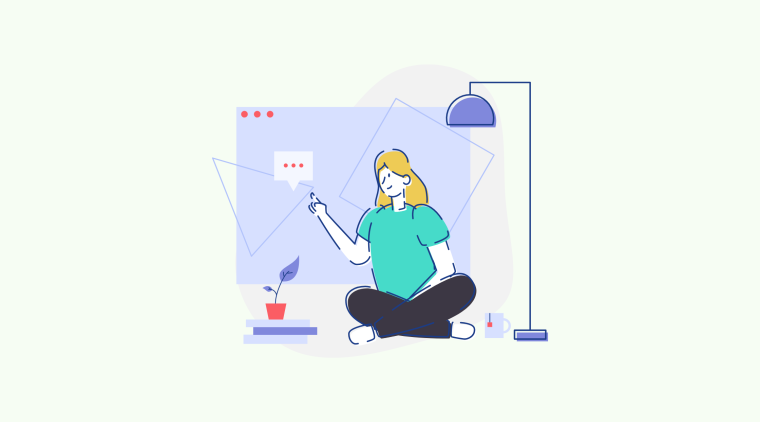User adoption strategies are the cement to your business, demolishing all types of churn and building toward those in-demand retention KPIs. If you’re leading or are part of a team focused on product-led growth (PLG), you should be continuously trying to improve user adoption to help your SaaS business, and product, go from strength to strength.
In this article, we’ll explore user adoption strategies, and how to measure user adoption success. We’ll also look at finding that sweet spot between an entirely smooth and slightly bumpy onboarding process that creates invested, long-term, active users.
What is user adoption?
User adoption is how new users go from being acquainted with your product to discovering its value and committing to it.
What is user adoption vs acquisition?
User adoption is about getting existing users to use a product more effectively or frequently. User acquisition is about bringing in new users who have not yet used the product before.
Why is user adoption important?
User adoption decreases churn, increases retention and customer lifetime value. In general, it raises metrics that measure how successful a product is.
What does adoption mean in UX?
In terms of UX, user adoption means finding the right amount of friction with your product.
How do you increase user adoption
Successful user adoption consists of many things including continuous user education, focus on user activation, and gently nudging users with in-app guidance.
Read below to learn all nine strategies on how to successfully raise user adoption.
What is user adoption?
User adoption is how a new user onboards your product into their life. It can also be referred to as product onboarding, although the two are slightly different.
Half of the user adoption process focuses on those first few product interactions to make sure someone understands how to use your product and to prevent existing users from leaving your product—churning. The other half of user adoption focuses on the longevity of your product, and how permanent of a feature it can be in someone’s life.
User Adoption vs User Acquisition
Before we go any further, let's clarify how user adoption is distinct from user acquisition.
User adoption refers to the process of getting users to actually use a product or service that they have already acquired, whereas user acquisition refers to the process of acquiring new users or customers who have not yet used the product or service.
In other words, user adoption focuses on getting existing users to use a product more effectively or frequently, while user acquisition focuses on bringing in new users who have not yet used the product or service at all.
Why is user adoption so important in SaaS?
No matter how fantastic a job you’ve done in acquiring your users, if your users don’t understand your product easily enough, they’re out of there—and the chances are, they’re not returning.
When looking specifically at common SaaS growth KPIs, an excellent user adoption strategy can help:
Decrease customer churn (the only metric you want to be decreasing)
Increase customer retention (CR)
Increase customer lifetime value (CLTV)
Increase acquisition
Increase activations
Increase signups to paid plan conversions
Increase Net Promoter Score (NPS)
If your user adoption strategy is not a focus among your product, marketing, and customer success teams, then you’ll soon feel the pinch. No matter how much work you put in elsewhere, if your customer doesn’t adopt your product, they won't adopt your business.
Of course, not everyone will be driven to your product at the same time, especially if you're new on the market. In this case, you'll see a product adoption curve move from innovators to early adopters, early majority, and beyond. Each customer segment will have its specific onboarding needs and activation flows.
Have we made our case? Ready to explore some user adoption strategies you can implement today? We thought you’d never ask…
Successful user adoption strategies
Product-led growth comes from ensuring our product is usable, accessible, and feasible. Increasing user adoption rates with user adoption strategies ensures we’re hitting usability and accessibility goals for our customers.
There are many user onboarding best practices you can consider at this stage, but here are nine stellar tactics to implement that will help up product adoption success rates and hit our PLG goals.
1. Onboarding doesn’t stop when someone’s onboard
First and foremost, your onboarding is not something that lasts a couple of weeks, and then your users are left to their own devices. If you want to keep someone engaged and constantly benefiting from your product, then their entire stay with you should be seen as an onboarding.
Keep educating your customers, whether with new feature release notes or with a deeper understanding of your current product, so they’re reminded of your business value.
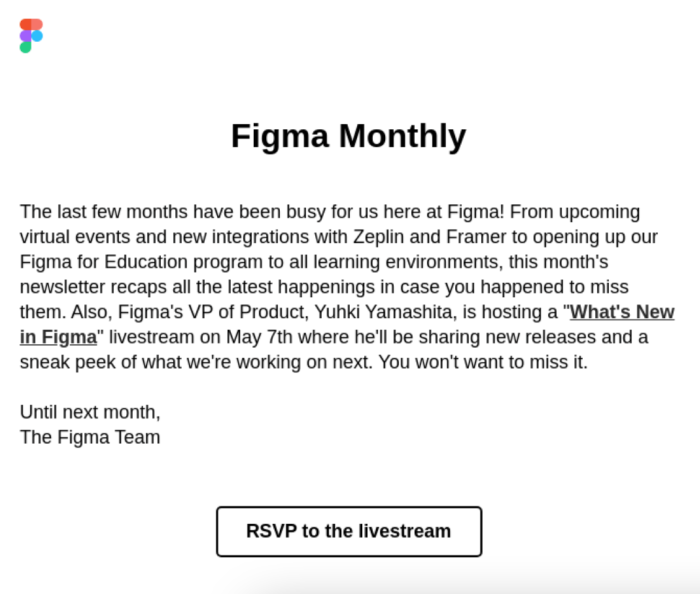
(Source)
To add to this, as people become more advanced users of your product, they’ll want to achieve more, push your product more, and get more out of it. This is a good thing, but you need to be ready to accommodate it.
Compare it to putting your users through school. You wouldn’t overwhelm a 4-year-old with algebra on their first day of kindergarten, at least we hope not. We know that a 4-year-old will be thrilled with 1+1 = 2.
Take the same attitude to teach your users. Give them the right amount of information they need (and can cope with) to be satisfied when they join you and step that information up a gear when they’re ready. By doing so, you’ll keep them engaged and keep them around for longer.
2. Push activations and “aha!” moments forward
Activations: That first time someone does something useful within your SaaS platform. This can be on a freemium or paid plan. It’s also referred to as the TTV: Time to value.
Aha! Moments: That first time someone truly sees the benefit of your platform and whispers under their breath, “aha!”. It’s the point where they see some real business value.
These moments are critical. Activations show someone understands how to navigate and use your product. “Aha!” moments show someone appreciates and values your product. These are two highly important moments in the user experience journey and ones that your business needs to understand and capitalize on.
When you understand at which point these moments are for different customer profiles/personas, you’re able to do a few things:
Bring them forward: Whether you do this with your onboarding messaging, your customer success team, webinars, email campaigns, or product tours. Bring these moments forward by enabling users to reach them more quicker.
Have them dictate marketing campaigns: If users define specific actions as “aha!” moments or activations, let future users know. Perhaps users find value in your product in areas you didn’t expect. Let this knowledge support how you sell the product earlier on in the funnel.
Make more of them: If you’re able to create more of these moments within critical onboarding time frames, then be our guest. Especially within those all-important first 30-days. You don’t need to bring value to your customer just once, do it repeatedly and build their satisfaction levels early on.
How can you identify activations and “aha!” moments?
Ask! In-app Microsurveys are a fantastic and non-invasive way to understand how someone benefits from your product and wrap your head around what they value.
Psst. The best Chameleon Microsurveys get an average completion rate of 92%. 🤫
Yes, qualitative data is great, but when you’re trying to understand what people really value in your business, then qualitative data is the way to go. You’ll learn a new language that sits better with your customers, and discover new experiences to rework into future onboarding and product communications.
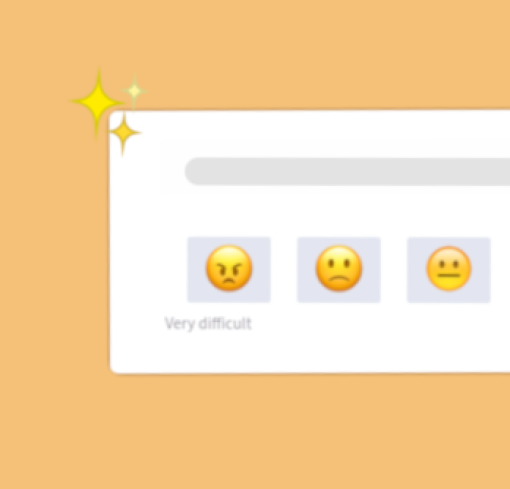
On-Demand Webinar: How to Use Microsurveys
Equip your team with a modern approach to user feedback that powers product development ⚡
3. Salt and pepper your onboarding experience (then add spice)
You know your product needs to be as intuitive as possible. Your onboarding experience needs to take the same approach. People learn by doing, so if you can complement the user experience and exploration stages within your product by lightly peppering (or salting) that journey with Tooltips, you’ll create a user that feels like they're being as productive with their time as possible because they’re learning as they go.
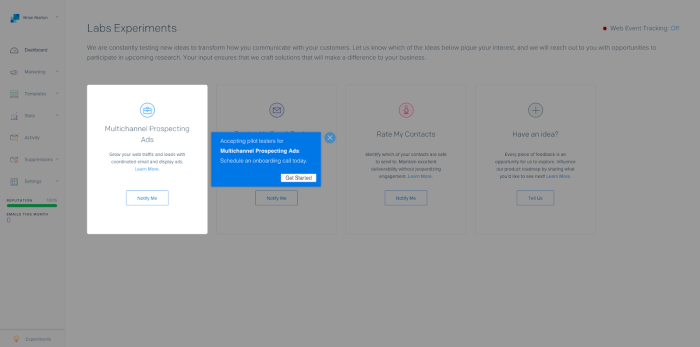
Take this approach step by step, and remember not to overwhelm new users. First, add salt and pepper. When they’re ready to explore new flavors—or a bit of spice—then you can crack out the mixed herbs and take their education to new heights.
4. Unify customer touchpoints
Your onboarding is not only an in-app experience—and it’s more than an email journey too. Once a customer has paid for your product, their onboarding experience begins with your brand across various communication channels. In the words of Scar, “you need to be prepared”—cc: Disney.
The chances are, you’ll need a powerful CRM to ensure all of your touchpoints are in sync and your customer has an omnichannel, on-brand experience. People work differently. They navigate online spaces depending on personal preferences. You’ll need to be ready to provide support and service on the phone, with the same efficiency as you can via social media, email, and in-product.
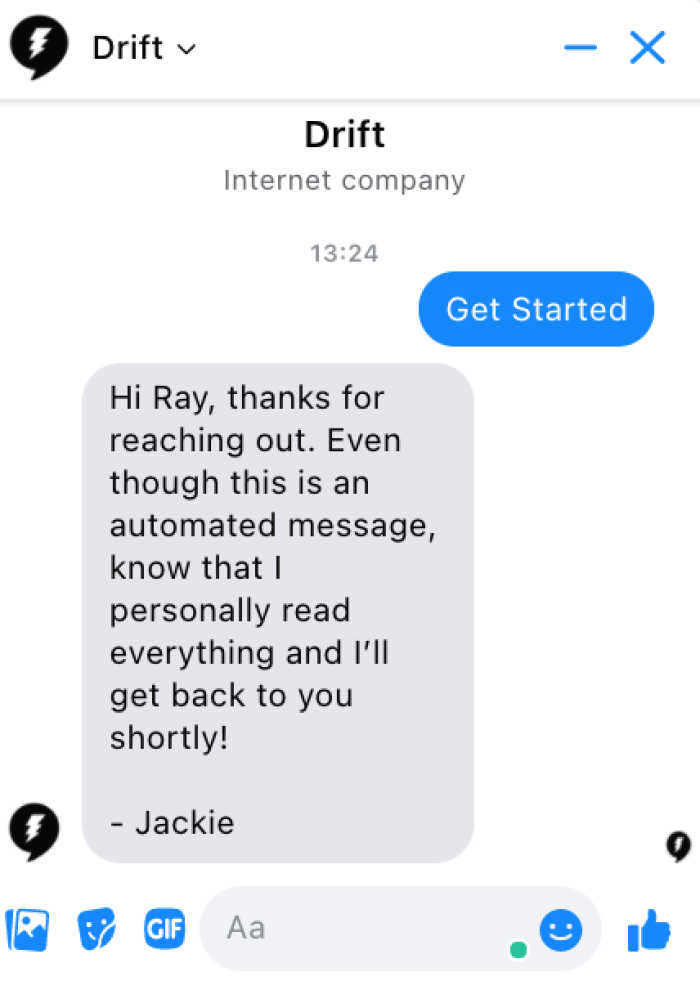
By unifying your customer communications, you build better customer engagement and give new users the best chance of user adoption possible. New users adopt your entire brand experience, not just your product experience.
5. Quell fears that encourage churn
Your user adoption strategy and its onboarding is not only about education and the adoption of new products. It’s also about quelling other fears or competitive solutions that encourage a customer to churn.
You need to give new users reassurance that they’ve made the right investment, and this is done by putting their minds at ease. Use your onboarding communications as a chance to affirm your place among someone’s SaaS toolkit, as well as push out any competing solutions they may be eyeballing on the sidelines.
It’s important to remember that just because someone has signed up for your product, it doesn’t mean they’re necessarily sold on it—especially if they haven’t had the option to take a free trial or freemium version first. Take the onboarding opportunity to confirm your users have adopted the right SaaS tool into their tech stack, and be creative with how you do it. Just because you’ve sold doesn’t mean you can stop selling.
6. Showcase reasons to stick around
After you’ve conquered customer churn, you can start to look at retention with your user adoption strategy. Maybe you’re looking at 30 to 60-day retention goals, or perhaps your product demands you look at yearly retention metrics.
Whatever you’re working towards, showcase the benefit new users will get from hanging around with your product. Include those benefits outside of your SaaS product adoption ROI.
User retention tactics to deliver via onboarding
Case studies: Never underestimate a case study 👏 They are so influential at multiple stages within your customer journey. Plus, yes, they can do wonders for product adoption and retention strategies. It’s just a matter of delivering the right use cases at the right time.
New users want to see an ROI from your product fast. So, use cases with a short timeline tend to do well in a new user's first few weeks. For example:
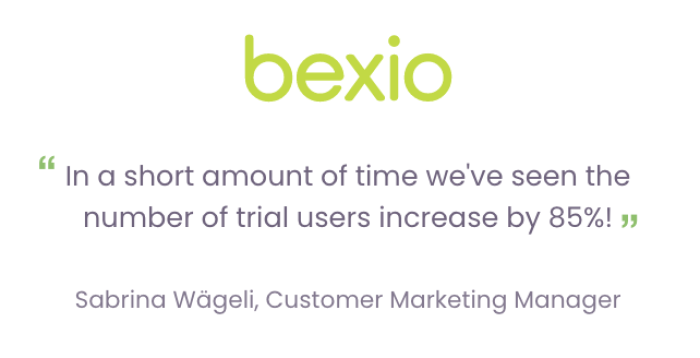
As new users, we love to see it. It’s snappy, it’s got a quick turnaround, and it’s insightful. However, as new users adopt your product, they’re already looking further down the line. ‘What can this product do for me long term?’
This is when it’s a good idea to feed more long-term use cases. For example, “The Motley Fool saw a 9% reduction in churn over the members’ first 45 days and a 20% increase in users taking key stock buying actions from using Chameleon to engage and steer users towards financial freedom.”
Referral schemes: When we say referral schemes, who comes to mind? If you’re not thinking Dropbox, then we need to talk. Possibly one of the most (if not the most) successful referral programs ever to grace the B2B world. Dropbox threaded its referral scheme into its product adoption. It did a few key things that helped them see a 3900% growth in 15 months.
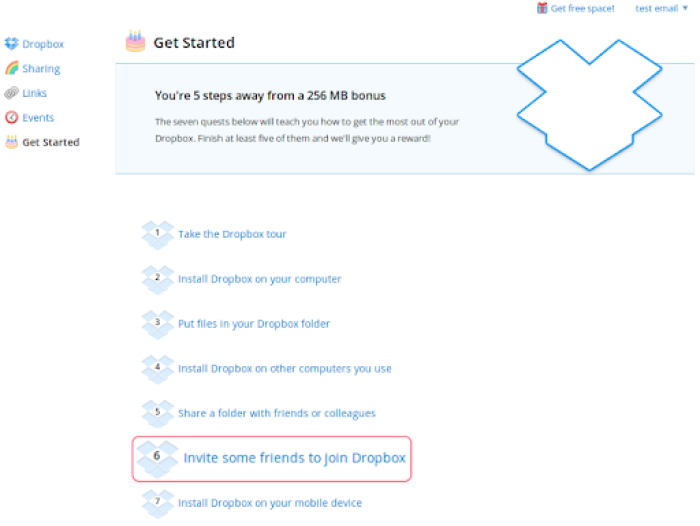
(Source)
Membership plans: If you’re threading user adoption strategies into your freemium model, then here’s your chance to upsell. You could not only win a conversion but build your CLTV. Membership plans typically run on an annual basis. If someone is loving your product, consider offering them multiple-year plans for a discounted rate. It’s a win-win.
Gifting: Last on our list of showcasing reasons for people to hang around is gifting, pulling on Cialdini’s principle of persuasion: reciprocity.
This doesn’t need to be a physical gift—although we’re sure many won’t say no to one. It could be credits, new feature access, BETA testing group privileges, or things that show you care, and your business is thankful. Asana also does a great job of gifting via pop-up visual treats each time you complete a step in their onboarding; it makes the user want to achieve more.
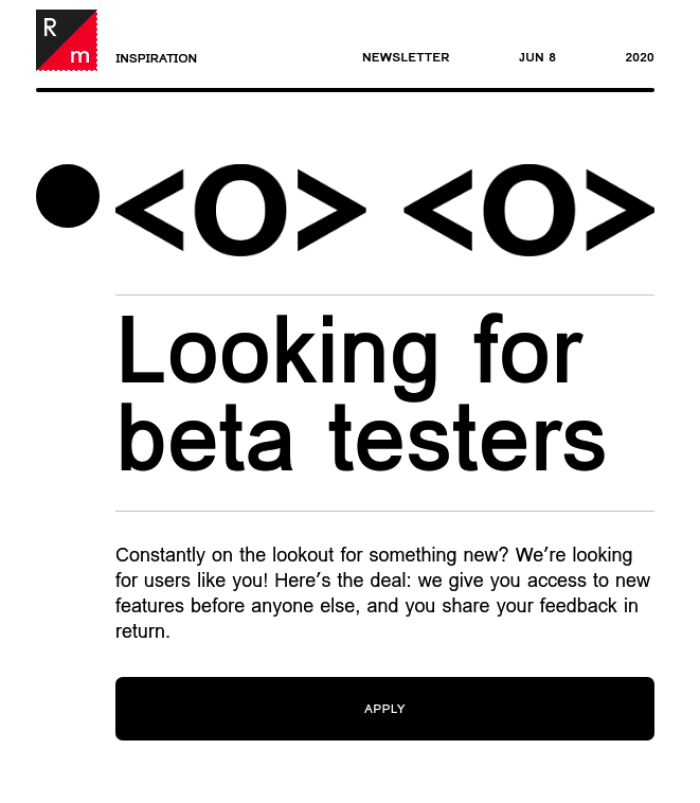
(Source)
7. Eradicate friction and frustrations
This is a three-step process to user adoption and helps you iron out the creases in your user onboarding. Friction and pain points in new products are our worst enemies—so let’s keep them close. We need to get close to our product, our customers, and their experiences to understand pain points before we go about squashing them.
Map your onboarding experience: Do this with each of your personas or in-app user segments. Where does someone go within your product to reach a specific goal? Understand that journey, see if there’s a drop-off within it, and survey your customers with closed and open-ended questions to document how they feel about it.
Identify & fix pain points: Identify those processes within product adoption that people are struggling with. Perhaps there’s a bug; maybe there’s a lack of resources, or perhaps the information isn’t clear. Whatever it is going on, pin it down and work out a process to fix it.
Notify your users: You may have made product adoption easier for future users, but what about your current ones? We all know increasing customer retention by just 5% can boost profits by 25% to 95%. Say thanks to your current users that gave their input on this process, and let them know you listened and that you’ve implemented change because of them.
8. Get personal and tailor onboarding to goals
Personalized onboarding is at the core of any user adoption strategy and its success. But how is this scalable? Personalized onboarding doesn’t need to be personal to each and every customer.
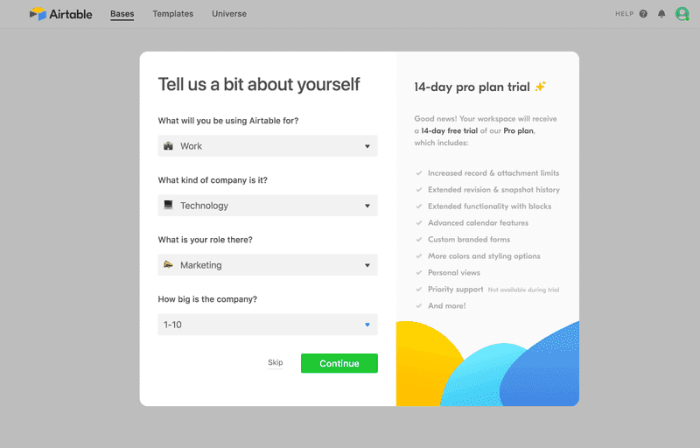
(Source)
You’ll find with your product that individual customers will have specific needs, goals, or problems they’re trying to solve with your product. They will also identify with a particular persona, and if you’ve done your homework, they’ve been riding quite comfortably down a sales funnel tailored to their needs and their persona type.
Keep them in that funnel with your user adoption strategy, tailor their onboarding experience to meet their needs, and up those adoption rates.
9. Provide accessible support and training
Last on our list for solid user adoption is accessibility to support and training. We all know the importance of accessibility in our products, and we trust you’re striving to create a product that’s as inclusive as possible. However, if we expect as many people as possible to adopt our products, we need to accommodate as many different learning styles as possible.
Provide access to different styles of support, training, and customer success. Some people are more visual learners and may need video support, others could be happy with tooltips, and some of us may just want to pick up the phone—call us old-fashioned.
What’s important is, you accommodate every product adoption learning curve possible, and you make new users aware of the options they have from your very first communication.
Finding the sweet spot in user adoption
All things considered, it’s essential to find the right amount of friction with your product as a certain amount of friction can be a good thing for an increase in your adoption rate. Otherwise known as the IKEA effect. Manageable, challenging friction can help to build someone’s mental authority and ownership over your product.
Imagine, you’ve just got your Bernië folding deck chair flat pack. You’re overwhelmed with excitement about opening it up and sitting on it at your friend Joe’s thing that he’s got going on later that afternoon. But first, you’ve got to build that deck chair. Now imagine you take it to Joe’s thing, and you proudly exclaim: “See this? I made this with my bare hands.”
The same can be said for our products. Sometimes small challenges, friction points, and low barriers to entry are a good thing. Whether that’s inputting data, integrating other SaaS products, or just generally doing some lifting, this psychological strategy will give your users ownership over your product and will see them striving harder to make it succeed. After you invest time in something, you’re that much more determined to make it work.
Measuring user adoption success
Right, you’ve got your strategies down, and they’ve been running for a while now. But, how can you measure user adoption success? What does user adoption success even look like?
Here's the adoption rate formula to help you measure your success.

Now, let's take a look at five actionable tactics you can use boost your adoption.
Customer churn cohort analysis
This user adoption measurement tactic is an excellent way to measure customer churn alongside changes you’ve made to your user adoption strategy over time.
If you lay your monthly new user cohorts alongside changes to onboarding processes, you’ll be able to see the effectiveness of your efforts. You should be able to determine if your actions have negatively or positively affected your user adoption rates.
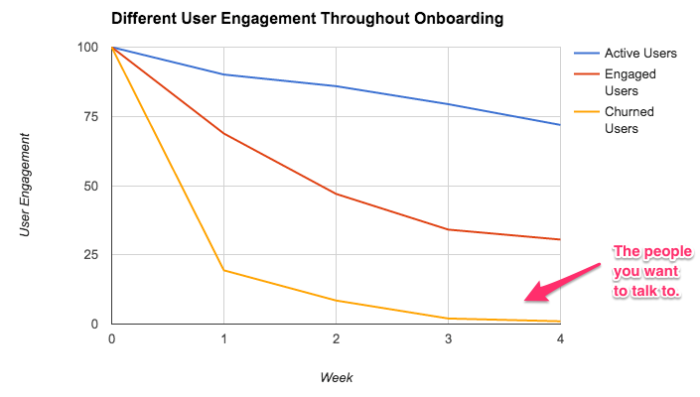
A/B testing
A/B testing within a cohort analysis is a great way to determine which idea or onboarding variant is better than the other. Test cohorts within cohorts, and finetune your user adoption strategies over time.
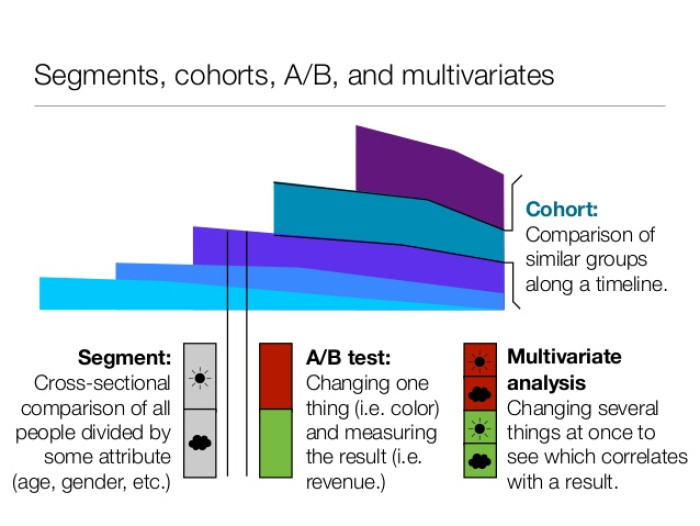
(Source)
Microsurveys
Follow up on your user adoption changes with targeted Microsurveys that deliver contextual feedback on whether your new users are happier with updated experiences than old users were with past experiences. These surveys can apply the qualitative data alongside the quantitative data you collect with your cohort customer churn analysis.
Signups to paid plan conversions
If you have a freemium product or a free trial, how much more of your users are converting to paid plans? This percentage should always be on the rise. If you see a decrease, it’s time to take a step back and analyze what change you need to undo.
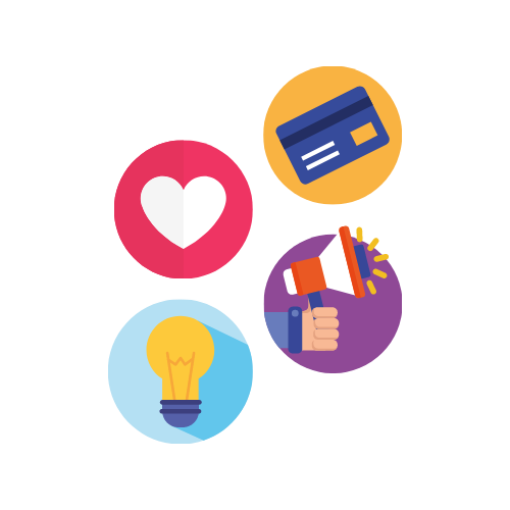
Improving Freemium Conversion: From “Aha” to MRR
We'll email you this on-demand webinar—learn how to encourage free users to become lifelong happy customers.
Net Promoter Score (NPS)
Happy customers = promoters.
This is another number that should keep climbing. Your NPS should reflect your user adoption strategy evolution and your overall customer-centric business strategy. Let’s try to get those detractors to passives, passives to promoters, and promoters to referrals.
Your NPS survey is one simple question that can give you a great understanding of the impact of your work.
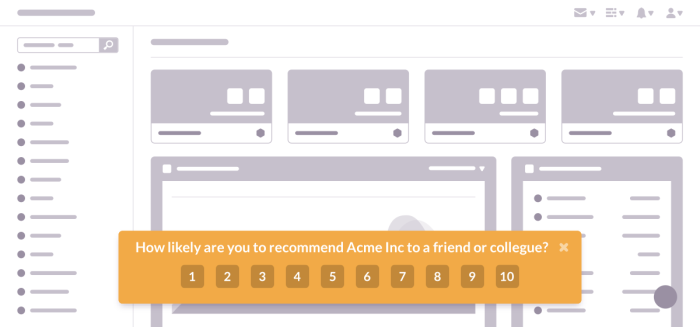
Watch your user adoption grow
That is a wrap. Implement these strategies, set up these reporting processes, and evolve your user adoption strategy for the better.
If you’re looking for SaaS support with your user adoption goals there are a ton of digital adoption platforms to help you get your job done. But where do you start looking? Don’t stress. We’ve documented 15 user onboarding tools for you right here. We’re just the gift that keeps on giving.
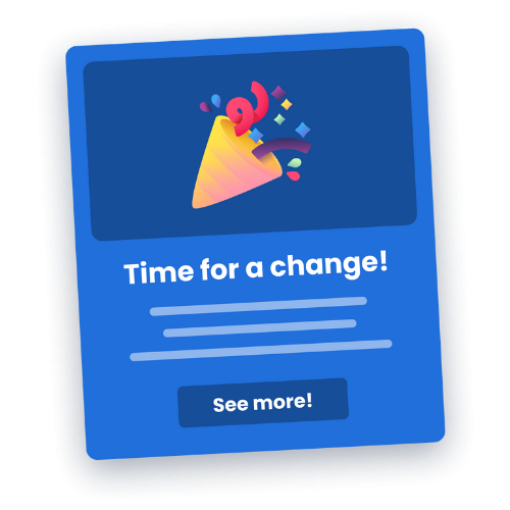
Boost product adoption with in-app messaging
Get started free with Chameleon and harness the power of product tours, tooltips, checklists, and surveys.





